Simca

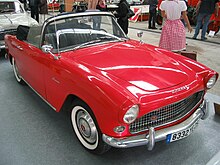

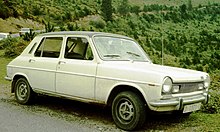
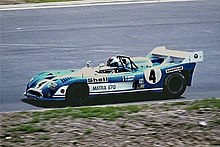


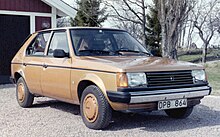

Simca (acronym for Société Industrielle de Mecanique et de Carosserie Automobile: Industrial Company of Automobile Mechanics and Bodywork) was a manufacturer of French automobiles that operated between 1935 and the 1980s.
Founded by the Italian Henri Téodore Pigozzi in 1934 to distribute and assemble Fiat automobiles in France, after the Second World War the company experienced a period of great expansion between 1950 and 1970, absorbing Ford France.
Chrysler Corporation became a shareholder in 1958 and became a majority shareholder five years later. However, the oil crisis of 1973 triggered a rapid decline for the company, which was sold to Peugeot in 1978. After renaming itself Talbot, it ceased its own production in 1986 and became part of the assets of the PSA Group.
It specialized in popular passenger cars (such as the famous Simca 1000), although it also produced some luxury models (especially in its early years and after the entry of Chrysler) and sports cars (after merging with Matra). In addition to its main factory in Nanterre (France), it produced its vehicles in Spain and Brazil and assembled them in Chile, Colombia, Australia, Holland and Morocco.
History
Foundation and association with Fiat
Henri Téodore Pigozzi was dedicated to exporting steel from France to Italy and counted among his clients the Fiat automobile factory in Turin. His employer, Giovanni Agnelli, was looking for a representative to introduce his cars in France and saw in him the right person. Pigozzi acquired the factory of the former manufacturer Donnet-Zédel in Nanterre and founded the company on November 2, 1934.
Initially it assembled models under license from Fiat, cars for everyone between the years 1930 and 1950 (among them the Topolino, the Simca 5 presented in 1936, the Simca 8 in 1937 and in 1947 the Simca 6).
Expansion of the 1950s
In 1951 he launched the Simca Aronde, his first own model, which was a resounding success. That same year Simca acquired the companies UNIC for trucks and SOMECA for tractors.
Simca absorbed Ford France in 1953 and, as part of the operation, Ford Europe in turn acquired 15% of SIMCA, which assumed the production of Ford Vedettes and Cargo trucks. The brand continued its expansion and, a year later, in 1954, launched the Vedette range based on the Ford model, which included the Versailles, Trianon and Régence models (in addition to the Comète coupé) complemented by in 1957 by the Ariane.
The second part of the 1950s saw the appearance of the Marly estate and new luxury models, such as the Beaulieu, Chambord and Présidence.
In 1958 Simca absorbed the manufacturer Talbot-Darracq. Chrysler Corporation, which later ended up having a hegemonic role in the company, acquired the 15% of Simca shares that Ford owned. That same year the Aronde P-60 appeared at the same time that Simca engineers began to work on a replacement for the Aronde due to the success that Renault's Dauphine (successor of the 4CV) was having in the market.. While Renault was designing the Renault 8, Simca began studying a similar car, with a quadrangular shape, despite the fact that it had no logic due to speed and consumption; From 1958 to 1960, different prototypes were manufactured and studies were carried out on what was to be the first Simca with a rear engine. It was the Turin native Mario Revelli di Beaumont who devised the aesthetics of the Simca 1000.
The new car was ready on September 1, 1961 and Téodore Pigozzi presented it to the public before exhibiting it at the Paris Motor Show, thus anticipating the presentation of the Renault 8, another three volumes that did not come out until the following year.
Chrysler Control
Chrysler became the majority shareholder of Simca when it took over 64% of the shares in 1963, the year of launch of the Simca 1500 and the SIMCA 1000 coupe.
In 1967 the Simca 1100 and a new coupé, the 1200S, were launched on the market, which replaced the Simca 1000 coupé.
The merger with Matra occurred in 1970 and gave rise to the models called Matra-Simca. Chrysler took full control of Simca by acquiring the majority of its shares, so the company was renamed Chrysler France.
From this moment on, their vehicles began to be marketed under the Chrysler brand. The luxurious Chrysler 180 was launched. Meanwhile, the Matra-Simca competition department achieved victory in the 1972 24 Hours of Le Mans with its Matra 670 model.
Crisis of the 1970s
Despite the economic problems caused by the oil crisis of 1973, the brand continued to launch models that were poorly adapted to the high cost of fuel, such as the Matra-Simca Bagheera and the Simca 1308 (also called Chrysler 150) in 1975.
The company tried to react to the crisis in 1978 by launching the Horizon, but it was too late. In the spring of that year, all production of the Simca 1000 ceased and, in August, overwhelmed by its disastrous economic results, Chrysler abandoned all its interests in Europe. Peugeot acquired Simca. Paradoxically, the Horizon was named Car of the Year in Europe, just as the 150 was in its day.
Acquisition by Peugeot
In 1980 Chrysler France, owned by Peugeot, became known as Société des Automobiles Talbot. In spring the Talbot Solara (a three-volume 150) was introduced and in autumn the Matra Murena and the top of the Talbot range, the Tagora, appeared.
In 1981, the Talbot Samba was presented, a small utility vehicle based on the Peugeot 104, of which Pininfarina made a cabriolet version the following year. Production of the different models was progressively canceled in France until the last Talbot Samba was manufactured in February 1986.
A final project, called Talbot Arizona, presented at the 1982 Paris Motor Show as a replacement for the Horizon, was never manufactured as a Talbot, but instead became the Peugeot 309.
Simca in Spain
In Spain Simca began its journey in 1966 with the automotive brand of Eduardo Barreiros with the model 1000, which remained in production for eleven years. In 1967 the 1100 was launched and in 1969 its counterpart, the 1200, appeared in Spain. Its last models were the Simca Horizon, which appeared in France in 1977 and arrived in Spain in the autumn of 1980, already renamed. by Peugeot as the Talbot Horizon, and the Talbot Solara at the beginning of 1981. The Villaverde factory, where the Simca were produced in Madrid, began to manufacture Peugeot models.
Manufactured models
- Simca Vedette
- Simca Ariane
- Simca Aronde P-60
- Simca 5
- Simca 6
- Simca 1000
- Simca 1100
- Simca 1500
- Chrysler 150
- Simca Horizon
- Talbot Samba
- Simca 1301
Image gallery
 |  | 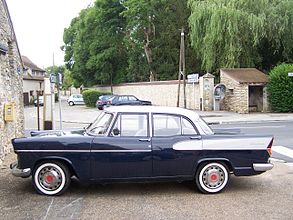 |
| Simca-Fiat 6CV (1932-1937) | Simca Aronde P-60 | Simca Beaulieu |
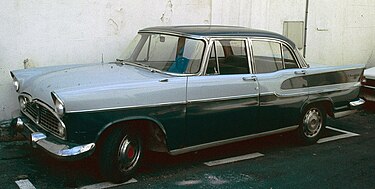 |  |  |
| Simca Chambord | Simca 1200 S | Simca Rally 2 |
Contenido relacionado
Drum
Electronic music
Trance (music)
Synthesizer
MIDI